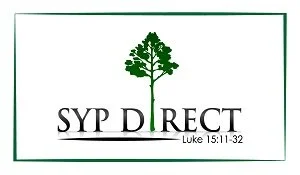Rustic Southern Pine (Knotty) floors are not created equal, not even close. We produce Heart Pine flooring from Longleaf Pine timber, not building materials from farmed Loblolly pine. Our #2 Knotty Southern Pine floors can be compared to Character grade Heart Pine, with up to 50% heart content. What this means is our #2 knotty pine simply lacks the heart content to be deemed Bayou Rustic Heart Pine which requires a minimum of 50% visible heartwood. So, distance from the middle of the tree (heart) determines if our #2 becomes Heart Pine. This is quite different from mills producing building materials from younger timber. Our Knotty pine grade has always been our #1 seller by volume and remains the most versatile board we offer. In conclusion, #2 Rustic Southern Pine has knots as opposed to Clear grade but not enough heartwood to be called Heart Pine.
What is New Heart Pine?
New Heart Pine is not new at all, not compared to dimensional lumber or farmed pine. While it is true the longleaf pines of old were allowed to grow hundreds of years and develop dense hearts, trees grown today do still develop some heartwood. The term Heart Pine refers to the non-living “heart” of a pine tree, as opposed to the outer living layers, known as sapwood. A pine tree’s heartwood is highly valued and preferred by many woodworkers and builders, because it is strong, hard, and has a beautiful reddish-gold color. Heart pine is a grade given to flooring with more than 50% visible heart content on the face over every board.
What is laminate?
What is laminate? So, in simplest terms, you print a layer of wood-colored plastic and then adhere it to a composite wood substrate like particle board. Laminate manufacturers use a wide range of materials including dangerous chemicals. Laminate is not wood, nor is it a floor, it is a floor cover made of chemicals and composites. Imagine a photocopy of real wood chemically bound to particle board or cheap composites. Made with synthetic materials or very thinly sliced pieces of wood, laminate equals replica. Made to look like wood grain by using a method similar to printing a photo, i.e., designed to fool those not paying attention.
What are VOCs’?
Volatile Organic Compound (VOC) is a term used to refer to organic chemical compounds that evaporate while drying (volatile). Products that contain VOCs release vapors during use and storage that are often harmful to both humans and the environment. According to the EPA, studies have found the levels of several organics average 2 to 5 times higher indoors than outdoors. Not only can contact cause breathing problems, eye, nose, and throat, irritation, and kidney, liver, and nervous damage, but VOCs also amplify the greenhouse effect, damage the ozone layer, and contaminate groundwater.
Why Are VOCs Still Used?
Unfortunately, manufacturers continue to use VOCs despite their harmful effects. While they may reduce VOC content as much as possible, many products depend on VOCs in their production process or use. For instance, most traditional wood-finishing products would have little to no workability without VOCs. VOCs are present in a variety of products such as paint, wood-finishing products, lacquers, hydraulic fluids, petroleum fuels, adhesives, pesticides, cleaning supplies, building materials, furniture, and electronic equipment such as printers.
Sand and Finish
Document Viewer of Sand and Finish Glossary. We tell all of our customers that our floors are barefoot ready, and sanding is not always necessary, but it brings out the best in your floor. One thing we talk about is faux age, or distressing your floor to make it look really expensive, old. Distressed A heavy artificial texture in which the floor has been scraped, scratched or gouged to give it a time-worn antique look. A common method of distressing is wire brushing

